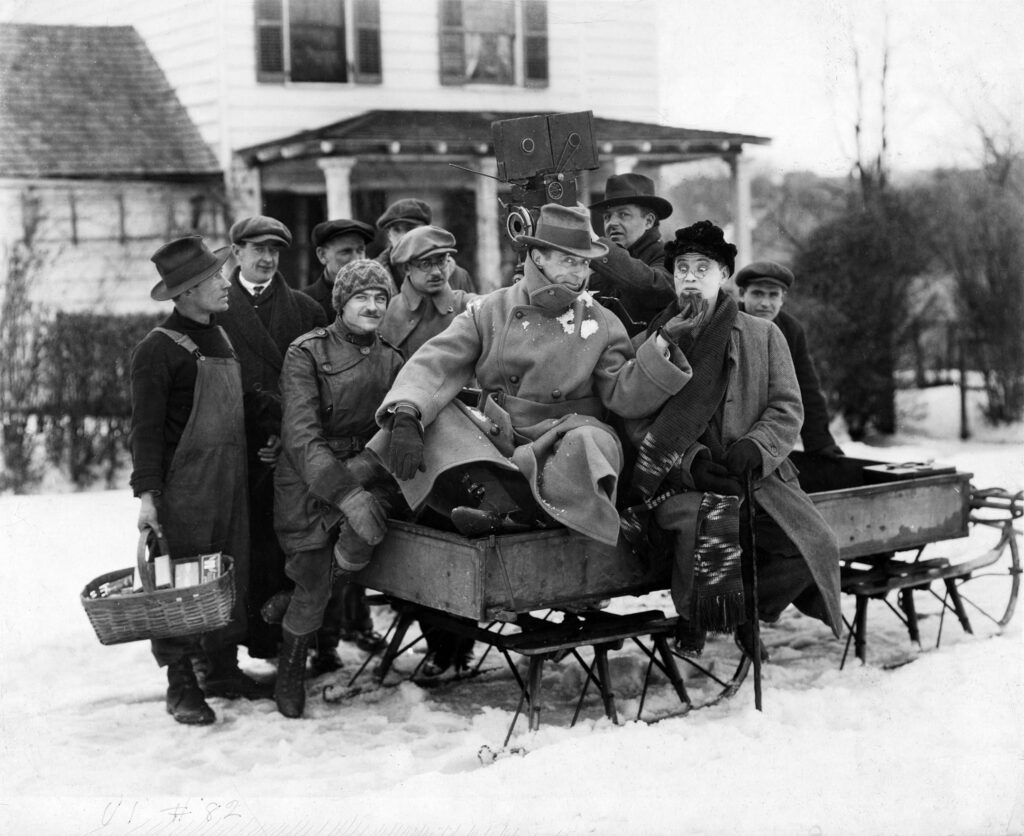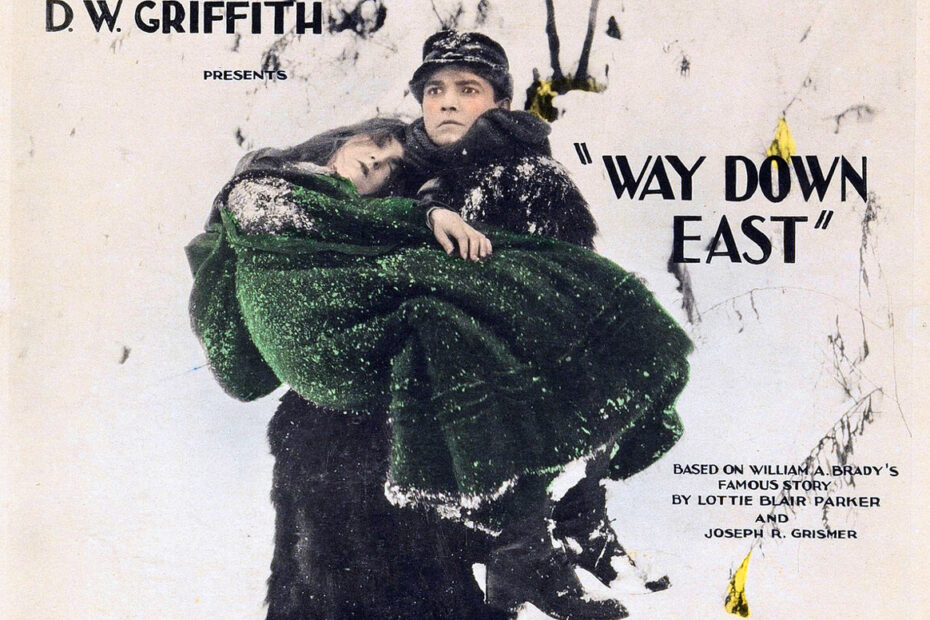Had it not been for the fact that I was on vacation for about two weeks in June and my seeing a slew of LinkedIn messages congratulating me when I got home, a big anniversary of mine would not have occurred to me. It has been 40 years since my first performance at MoMA, accompanying D.W. Griffith’s Way Down East (1920).
Around the time of my graduating from NYU undergrad film school in 1984, when I was still in my dorm room but not moved out just yet, I received a phone call. It was from Robert Beers at the Museum of Modern Art, informally known to many of us simply as R. Beers. He wanted to know if I could accompany a screening of MoMA’s new restoration of D.W. Griffith’s Way Down East in June. Indeed I was, and was thrilled at the opportunity.

I had been accompanying films for nearly three years at this point, but I was not an unknown to the Department of Film. In the 1982-1983 school year there was a semester when I accompanied silent films at a course taught by MoMA’s Charles Silver that was being offered at Bridgeport University in Connecticut. At the time, Bridgeport had a very successful film program, one I’d applied to an been accepted in. Charles had got wind of me and what I do through some sort of grapevine via NYU, since I’d been playing for silents at classes there taught by William K. Everson and Robert Sklar.
For that semester, Charles Silver and I traveled by rail to Connecticut every week for this class, and I had visited MoMA’s Film Study Center – which was run by Charles – to preview many of the films on 16mm.
And so, I had now been booked by MoMA to accompany a silent film at a public screening.
One hitch for me was that I was given a Xeroxed copy of the film’s original score by William F. Peters and was tasked with accompanying the film with his music. I had up till this point been performing my accompaniments largely as improvisations, infused with a smattering of pre-composed themes and incidental music. It was during the prior three years that I had befriended and become an inadvertent mentee of Lee Erwin (1909-2000). Lee was a silent movie organist who had been playing in theaters in the 1920s. Lee was also an improviser and had helped and encouraged me with this skill a great deal.
I rolled up my sleeves and woodshedded the music as much as I possibly could. One thing I discovered right away was that this score was primarily existing music, much of it recognizable tunes and that these motifs were repeated frequently throughout the score. This was what I’ve referred to as “Peter and the Wolf”-type scoring that was typical during the silent era. The comedy-relief old constable had as a theme “The Old Grey Mare”. Lowell Sherman, the slimeball from the city had a four bar motif that was, to put it mildly, a sequence of heavy-handed diminished chords. Lillian Gish’s theme was “Those Endearing Young Charms”, a tune that fans of Warner Brothers cartoons will know from a number of Daffy Duck shorts involving a xylophone rigged to a keg of TNT. In the Peters score, these tunes were played anytime one of the characters entered a scene, regardless of what was happening dramatically in the storyline.
Not my way of accompanying films, as had been drilled into me by Lee, and perhaps this is why he never encouraged me to hunt down these “original scores”. Back in the 1980s they were extremely rare and hard to find, and Lee’s opinion was most of them didn’t work well anyway, at least not in a contemporary setting, when an audience has a different expectation of a film score.
I dutifully learned the Peters score, and this repetition of leitmotifs helped my having to learn two and a half hours of music since a good deal of it was the same themes over and over. Fortunately for me, the pages of the score that covered the climactic sequence when Lillian Gish races out into the snowstorm and winds up on an ice floe and is rescued by hero Richard Barthelmess was missing. I got to underscore the film’s thrilling chase and rescue the way I wanted to.
It was an exciting event for me, getting to make my debut at MoMA at such a young age. My parents and sister and my dad’s folks who were visiting from Florida all came to the show. I don’t remember if I played the show twice or not. But the vivid memory of getting to accompany a 35mm print for the very first time and at the legendary Museum of Modern Art in their Titus 2 auditorium has stayed with me over what now turns out to be four decades.
Being reminded that this happened 40 years ago doesn’t make me feel old as much as it just reminds me how long ago many things I’ve done have happened. For instance, when preparing to launch my Kickstarter to restore Roland West’s The Bat (1926), I had assumed my memory of having seen and accompanied the film was from the last 10 or 15 years. When I searched on MoMA’s online database of press releases, I discovered that the show I was thinking of and which had seared an impression of the film in my mind had happened in 1995…nearly 30 years ago.
And so, happy 40th to my stint as resident silent film accompanist at the Museum of Modern Art which occurred on June 20. A big thank you is due to Larry Kardish, senior curator emeritus, who I believe is the one who had R. Beers contact me for this Way Down East gig.
You can catch me at MoMA next during the beginning of August, when MoMA will be having its second annual Silent Movie Week, organized by Dave Kehr. I will be accompanying A Girl in Every Port (1927) starring Victor McLaglen and Louse Brooks on Friday, August 1, and The Gorilla (1926) with Fred Kelsey and Charley Murray on Monday August 5.

